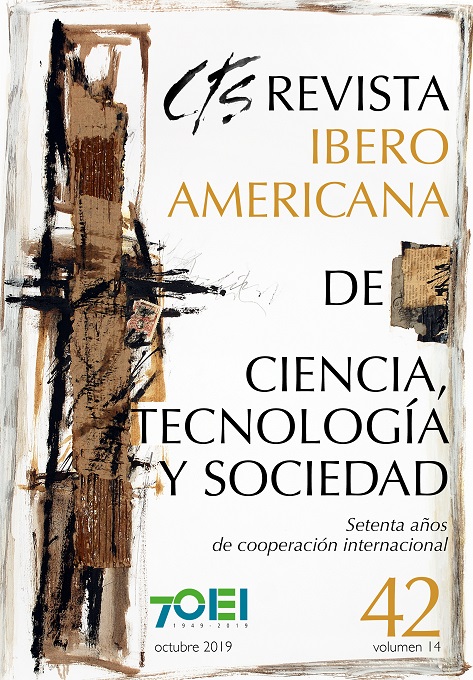A Reference Framework for Childhood and Adolescence in Latin America and the Caribbean
Keywords:
childhood and adolescence policies, childhood, Convention on the Rights of the Child, sustainable development goalsAbstract
Close to half of all children and teenagers in Latin America and the Caribbean live in poverty and have a high chance of falling behind in their socio-emotional and cognitive development. While most countries in the region have policies and action plans for children and adolescents, these are highly heterogeneous in their design, depth and reach. Based on the examination of current policies in six countries in the region, a reference framework is proposed to build policies targeted to guarantee the well-being of people between 0 and 18 years old, based on the Convention on the Rights of the Child in the sustainable development goals (SDGs) of the 2030 Agenda. The main guidelines proposed focus on the life path of each child, an intersectorial perspective, territorial implementation and the establishment of a monitoring mechanism and long-term assessment.Downloads
References
COMISIÓN ECONÓMICA PARA AMÉRICA LATINA Y EL CARIBE (2018): Panorama Social de América Latina 2017, Santiago de Chile, CEPAL.
COMISIÓN ECONÓMICA PARA AMÉRICA LATINA Y EL CARIBE (2019): Acerca de la Agenda 2030 para el Desarrollo Sostenible. Disponible en: https://www.cepal.org/es/temas/agenda-2030-desarrollo-sostenible/acerca-la-agenda-2030-desarrollo-sostenible. Consultado el 25 de agosto de 2019.
COMISIÓN ECONÓMICA PARA AMÉRICA LATINA Y EL CARIBE y FONDO DE LAS NACIONES UNIDAS PARA LA INFANCIA (2018): América Latina y el Caribe a 30 años de la aprobación de la Convención sobre los Derechos del Niño, Santiago de Chile, CEPAL/UNICEF, Organización de las Naciones Unidas.
CONSEJO NACIONAL DE INFANCIA (2014): Política nacional de niñez y adolescencia, Sistema integral de garantía de derechos de la niñez y adolescencia, Santiago de Chile.
ESTADO PLURINCIONAL DE BOLIVIA (2015): Plan de desarrollo económico y social 2016-2022: El marco de desarrollo integral para vivr bien, La Paz.
FONDO DE LAS NACIONES UNIDAS PARA LA INFANCIA (2006): Convención sobre los derecos del niño, UNICEF, Madrid.
FONDO DE LAS NACIONES UNIDAS PARA LA INFANCIA (2017): Documento del Pprograma de País: Estado Plurinacional de Bolvia, UNICEF, La Paz. Obtenido de https://www.unicef.org/bolivia/2017-PL14-Bolivia-CPD-ODS-ES.pdfhttp://www.sipi.siteal.iipe.unesco.org/. Consultado el 25 de agosto de 2019.
FONDO DE LAS NACIONES UNIDAS PARA LA INFANCIA (2019). rogreso para Todos los Niños en la Era de los Ods: Resumen Ejecutivo, UNICEF. Disponible en: https://www.unicef.org/spanish/publications/http://www.sipi.siteal.iipe.unesco.org/. Consultado el 25 de agosto de 2019.
GOBIERNO DE CHILE (2017): Plan de Acción Nacionalde Niñez y Adolescencia 2018-2025, Santiago de Chile.
GOBIERNO DE COLOMBIA (2012): De cero a siempre, Atención integral a la primera infancia, Bogotá.
GOBIERNO DE COLOMBIA. (2018): Política Nacional de Infancia y Adolescencia 2018-2030, Bogotá.
GOBIERNO DE ECUADOR (2018): Plan Toda una Vida. Intervención emblemática, Quito.
INSTITUTO INTERAMERICANO DEL NIÑO (2002): La planificación de políticas de infancia en América Latina: Hacia un sistema de protección integral y una perspectiva de Derecho, Montevideo, Instituto Interamerica del Niño, OEA.
MINISTERIO DE DESARROLLO E INCLUSION SOCIAL DE PERÚ (2019): Primero la Infancia. Disponible en: http://www.midis.gob.pe/index.php/lineamientos-primero-la-infancia/. Consultado el 25 de agosto de 2019.
MINISTERIO DE DESARROLLO SOCIAL E INSTITUTO DEL NIÑO Y ADOLESCENTE DEL URUGUAY (2016): Plan Nacional de Primera Infancia, Infancia y Adolescencia 2016-2020, Montevideo.
MINISTERIO DE LA MUJER Y POBLACIONES VULNERABLES DE PERÚ (2012): Plan Nacional de Acción por la Infancia y la Adolescencia 2012-2021, Lima.
MINISTERIO DE SALUD Y DESARROLLO SOCIAL DE LA REPÚBLICA ARGENTINA (2019): Primera Infancia. Disponible en: https://www.argentina.gob.ar/desarrollosocial/primerainfancia. Consultado el 25 de agosto de 2019.
MORLAHETTI, A. (2013): Sistemas nacionales de proteccion integral a al infancia. Fundamentos jurídicos y estados de implementación en América latina y el Caribe, Santiago de Chile, CEPAL.
ORGANIZACIÓN DE LAS NACIONES UNIDAS (2019): Objetivos de Desarrollo Sostenible. Disponible en: https://www.un.org/sustainabledevelopment/es/objetivos-de-desarrollo-sostenible/. Consultado el 25 de agosto de 2019.
ORGANIZACIÓN DE LAS NACIONES UNIDAS PARA LA EDUCACIÓN, LA CIENCIA Y LA CULTURA (2019): Sistema de Información sobre Primera Infancia en América Latina, UNESCO. Disponible en: http://www.sipi.siteal.iipe.unesco.org/. Consultado el 25 de agosto de 2019.
REDUCA y FUNDACIÓN SURA (2018): Aprender es más. hacer realidad el derecho a la educación en América latina, Bogotá.
THE WORLD BANK GROUP (2016). Pobreza infantil en América Latina y el Caribe. Washington DC, Banco Mundial.
Downloads
Published
How to Cite
Issue
Section
License
All CTS's issues and academic articles are under a CC-BY license.
Since 2007, CTS has provided open and free access to all its contents, including the complete archive of its quarterly edition and the different products presented in its electronic platform. This decision is based on the belief that offering free access to published materials helps to build a greater and better exchange of knowledge.
In turn, for the quarterly edition, CTS allows institutional and thematic repositories, as well as personal web pages, to self-archive articles in their post-print or editorial version, immediately after the publication of the final version of each issue and under the condition that a link to the original source will be incorporated into the self-archive.











